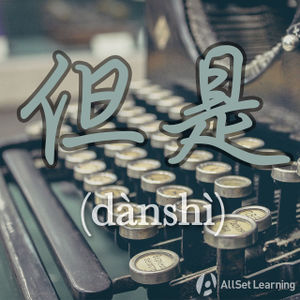Difference between revisions of "Expressing "although" with "suiran" and "danshi""
| Line 1: | Line 1: | ||
{{Grammar Box}} | {{Grammar Box}} | ||
| + | |||
| + | The grammar patter "虽然...但是..." (suīrán ... dànshì ... ) is one of the most common used patterns in Chinese, especially in written Chinese.It is used often to bring up a certain point, then to show that there is a contrary reaction. | ||
== Structure == | == Structure == | ||
| − | "虽然 ... 但是 ... " | + | "虽然 ... 但是 ... " expresses that while the former part of the sentence is true, there is an adverse reaction in the latter part. |
<div class="jiegou"> | <div class="jiegou"> | ||
Revision as of 06:28, 13 March 2013
-
Level
-
Similar to
-
Used for
-
Keywords
The grammar patter "虽然...但是..." (suīrán ... dànshì ... ) is one of the most common used patterns in Chinese, especially in written Chinese.It is used often to bring up a certain point, then to show that there is a contrary reaction.
Structure
"虽然 ... 但是 ... " expresses that while the former part of the sentence is true, there is an adverse reaction in the latter part.
虽然 + Subject + 但是 + Contrary Reaction
Simply put, the pattern means Although...but.... in English, and is generally used in the same manner. Be aware that "可是" can be used interchangeably with "但是".
Examples
- 虽然 他 是 美国 人 ,但是 他 还 没 去 过 华盛顿。
- 虽然 她 说 不 太 饿,但是 她 点 了 很 多 菜。
- 他 虽然 给 别人 很 热情 的 感觉,可是 他 其实 是 一个 坏人。
See also
Sources and further reading
Books
- Basic Patterns of Chinese Grammar (pp. 115-6) →buy
- Common Chinese Patterns 330 (汉语常用格式330例) (pp. 217) →buy
- Integrated Chinese: Level 1, Part 1 (3rd ed) (pp. 245) →buy
- Modern Mandarin Chinese Grammar: A Practical Guide (pp. 256-7) →buy
- New Practical Chinese Reader 2 (新实用汉语课本2) (pp. 177) →buy



